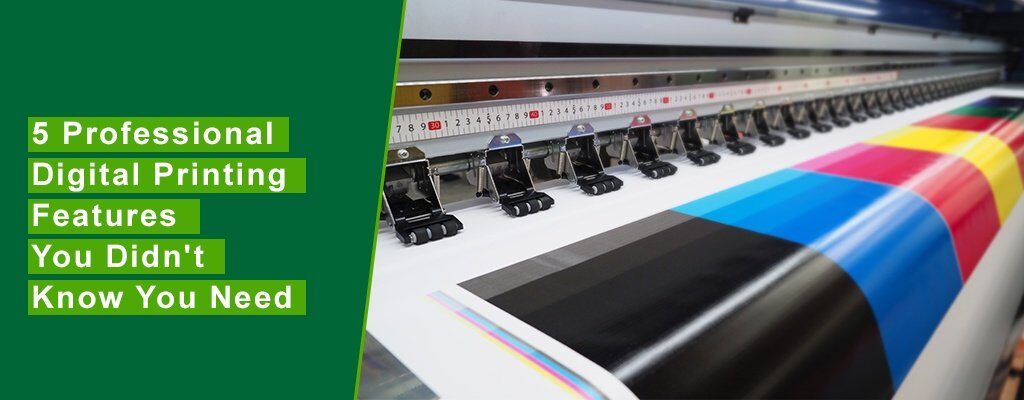You can sell globally without holding inventory by using print on demand.
Understanding Exactly How Digital Printing Changes the Printing Industry
The printing market, long soaked in traditional techniques, is undertaking an extreme change with the development of electronic printing. This innovative technology, which avoids the demand for publishing plates, enables rapid production and personalization, reshaping the landscape of print communication. With its prospective to stimulate involvement via personalized content and to offer sustainable options, it's clear that electronic printing is greater than a technological breakthrough; it's a critical video game changer. Just how specifically does it change the industry? Let's explore.
The Advancement of Digital Printing: A Short Summary
Given that its inception, electronic printing has gone through substantial changes, consistently transforming the printing sector. With the advent of the 90s, digital printing modern technology began to mature, and the sector observed the intro of straight imaging presses, which got rid of the demand for printing plates. As the new millennium unravelled, advancements in innovation better stimulated the growth of digital printing, leading to the development of high-speed inkjet printers.

Unloading the Technology Behind Digital Printing
Exploring the complexities of electronic printing innovation, one encounters an abundant tapestry of advanced equipment and complex formulas. At the heart of this process exists a digital picture, which is processed by software application that divides it right into a grid of dots. These dots are after that transformed right into a digital code. This code is analyzed by the printer, which uses it to specifically deposit beads of ink onto the substratum. The droplets are so little and precise that they produce a photo that is essentially indistinguishable from the original. This detailed system, reinforced by innovative software and high-resolution imaging, has changed the landscape of the printing industry, leading the way for extraordinary levels of information and precision.

The Advantages of Digital Printing for Organizations
Comprehending the modern technology behind digital printing gives a clear photo of its accuracy and detail. For organizations, this translates right into numerous advantages. Digital printing uses extraordinary speed, allowing companies to meet tight due dates without endangering on quality. Next, it minimizes costs as there are no plates or physical setup, making it best for small-volume printing jobs. This technology provides remarkable uniformity with each print result, removing variations frequently seen in standard techniques. Digital printing is environmentally friendly, using less ink and producing less waste. The complete capacity of digital printing is recognized find when used for customization and customization, a subject that will certainly be covered in depth in the next section.
The Duty of Digital Printing in Modification and Personalization
While typical printing approaches battle with customization and personalization, electronic printing masters these areas. It enables the very easy modification of designs, without the demand for costly and taxing plate modifications (print on demand). This enables businesses to customize products to specific customers, conference particular requirements and boosting customer complete satisfaction
Digital printing also permits variable information printing, where elements such as text, graphics, and photos may be altered from one published item to the next, without reducing down the printing procedure. This is particularly helpful for straight marketing projects, where tailored messaging can considerably enhance feedback prices. By doing this, digital printing not only reinvents the printing industry however likewise transforms the means services connect with their clients.
Evaluating the Ecological Influence of Digital Printing
Although digital printing has been lauded for its function in personalization and customization, it is crucial to examine its environmental impact. Digital printing can be less wasteful than standard approaches, due to the fact that it operates a 'print on need' basis, eliminating the need for Discover More large print runs that can result in surplus and waste. Additionally, it uses fewer chemicals and produces less volatile natural substances (VOCs) contrasted to counter printing. The power use of electronic printers can be high, leading to boosted carbon impact. Moreover, making use of non-recyclable printing elements and the difficulty site link of e-waste administration position considerable environmental concerns. Consequently, while electronic printing has several benefits, its environmental impact must be conscientiously managed.
Conclusion
In final thought, electronic printing has actually changed the printing market, offering fast, economical, and high-grade remedies - print on demand. Comprehending these modifications is essential for organizations to utilize the advantages of electronic printing efficiently.